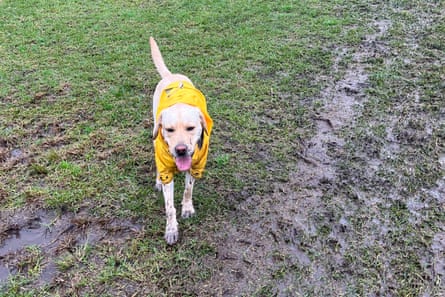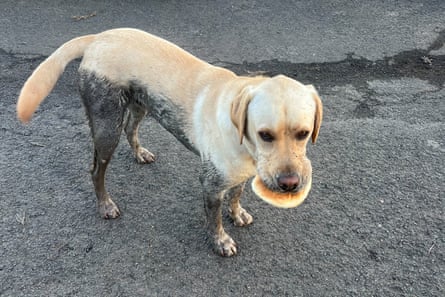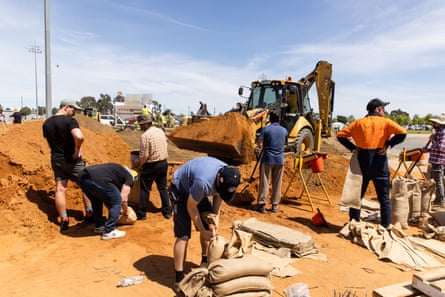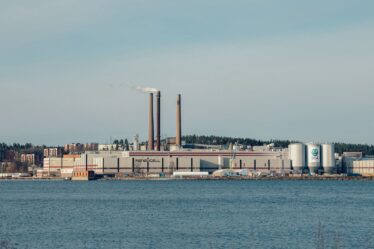
In 2022, my labrador and I developed a well-worn ritual.
Every evening, we would head out to the football oval down the road from my house, armed with a Frisbee, a poo bag and a leash.
I would arrive determined to keep him clean and dry for the length of our journey; he with an unwavering resolve to ruin my day.
I do not know when the mud puddles began to pop up on the outskirts of the oval – only that they had been there since I moved from Melbourne to Sydney in December 2021, growing deeper and wider with every determined dog’s efforts.
On a bad day, the entire oval was squelchy and wet, and we would walk “between downpours” only to arrive home sopping wet.
At the best of times, the puddles were a gloomy reminder of eastern Australia’s back-to-back La Niña events – the blue skies nothing more than a brief reprieve from more rain, and more rain after that.
The conclusion of the walk was always the same. No matter how hard I tried, Murphy would, inevitably, bound into a mud puddle, where he would splash madly and stretch out in jubilation.
The sporadic sunshine did not dry the puddles out. They were here to stay; the “new normal” of our dog walk.
No matter how pained my shouts of “Murphy”, “stop it”, “please, God no”, he would find a way to cover himself in mud, returning home like he was wearing extremely fashionable black, knee-high boots, his face specked with grit and dirt.
This was life in sopping Sydney in 2022. When the sun came out, it became something to talk about.

When I moved north, I was told that what Sydney lacked in my home town’s culture and nightlife it would make up for in beautiful weather and beaches.
In Melbourne, we joke that the city was forced to develop a soul – gigs, hidden bars, good coffee and theatre – because the weather is so bad.
Sydney’s average daily maximum temperature is about 3C warmer than Melbourne throughout winter, while Sydney’s summer extremes tend to be milder.
I envisioned weekends of swimming, sunbathing and Aperol spritzes. I pictured myself riding the ferry, eating on sidewalks, perhaps even featuring on Bondi Rescue.
I was ready to annoy my friends shivering through Melbourne’s punishing winters with leisurely posts on Instagram of me dining alfresco.
Instead, Sydney broke its record for the wettest year ever. The previous record of 2,194mm of rain – which fell in 1950 – was smashed on 6 October. And the rain kept falling for weeks after that.
2022 has been a truly exceptional year of rainfall in #Sydney. It only took 279 days to break the city’s annual rainfall record of 2194mm from 1950, with annual data available back to 1859. pic.twitter.com/z6RtCopxqO
— Ben Domensino (@Ben_Domensino) October 6, 2022
Hot girl summer? Not quite.
So, I got used to replacing the buckets in the bathroom where the water drips relentlessly from the ceiling. I grew accustomed to wiping down my books in bleach to remove the layers of furry green mould, and to scrubbing down our walls and ceilings.
Washing my jackets in vinegar became just another routine.
Yet while I can complain at length at my minor inconveniences, others didn’t get off so lightly.
#Sydney‘s exceptionally wet year continues.
The city just had its wettest January-to-October period on record by a whopping 341.8mm. The previous record was 2054.4mm from 1950. The new record set this year is 2396.2mm.
Annual rainfall data in Sydney dates back to 1859. pic.twitter.com/Y5IYsEoPp1
— Ben Domensino (@Ben_Domensino) November 2, 2022
Three major flooding events in the past year have devastated communities across Queensland, New South Wales, Victoria and now South Australia, costing governments billions and ravaging local wildlife.
I have covered floods on the Hawkesbury in NSW and in north-eastern Victoria, where residents in gumboots watching their houses become inundated spoke frankly of others having it worse off.
Many of them, living on floodplains, are uninsured due to eye-watering costs.
The science of the climate crisis says the situation we are in now will only get worse. In Shepparton, a regional Victorian city that flooded in October, 90% of the township is expected to be uninsurable by 2030, according to the Climate Council.
During spring the community was sandbagging in places they never had before. Further west in Rochester, nearly every home was flooded. At least 160 residents were served with eviction notices by their landlords.

When people look for a silver lining, their optimism sounds almost apocalyptic. People reason: “At least there won’t be bushfires this summer.”
This rhetoric is what I fear. Gone are the days when the changing of the seasons was something to look forward to, when summer holidays consisted of 25C days, clear skies and a light breeze.
We know climate change is causing natural disasters to worsen in severity and regularity.
We know the world has already heated by about 1.2C on average since the pre-industrial era, with a high chance of reaching 1.5C within the next decade.
The speed and ferocity of extreme weather events in the last three years has been traumatic, particularly for young people grappling with the reality that this is the new normal.
I would love to return to the days when the Sydney v Melbourne rivalry felt important, and the greatest debate was who had better restaurants instead of whether it was appropriate to light the harbour in fireworks while bushfires are raging.
There is a sense now, though, that we are all in the same boat – and it is sinking.
When La Niña subsides in early 2023, rainfall on Australia’s east coast will be brought back to “neutral” territory.
But the extreme weather will continue. The records will continue to break. We don’t know how it will end, but we know how it has begun.



